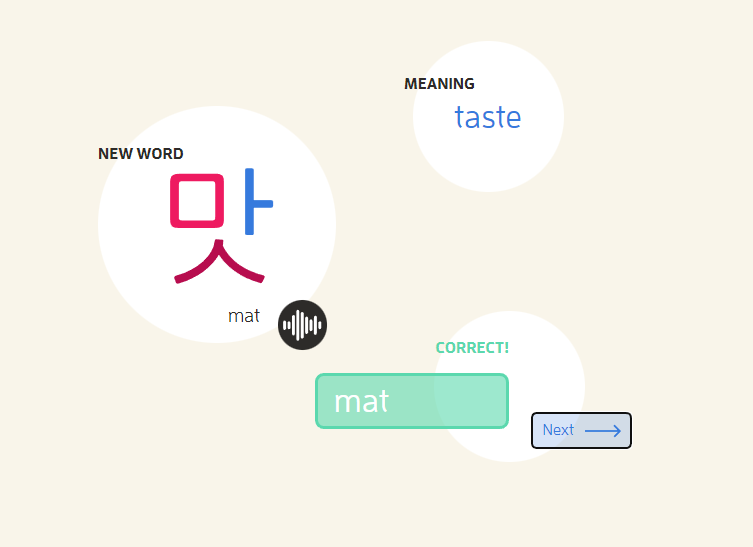Let’s get into some grammar today for beginners and learn about 받침 or batchim rules! Batchim affects how you pronounce a lot of words and sentences so it is a key thing to learn early on.
받침 Batchim Meaning
받침 is a grammatical feature focused on pronunciation. The word 받침 means to support or prop; and is the bottom character in a Korean syllable (like 받: ㄷ 침: ㅁ).
The word itself is an example of its grammar rule! Each letter romanized comes out to equal badchim but it is actually pronounced more like batchim and so more often you’ll see it romanized as batchim rather than badchim.
How Many Batchim Rules are There?
There are 7 key batchim rules that depend on the consonants used. Some characters like ㄱ, ㅋ, and ㄲ share the same rule as you can guess because they are very similar consonants.
- ㅇ = ㅇ
- ㄱ, ㅋ, ㄲ, ㄳ, ㄺ = ㄱ
- ㄷ, ㅌ, ㅅ, ㅆ, ㅈ, ㅊ, ㅎ = ㄷ
- ㅁ, ㄻ = ㅁ
- ㅂ, ㅍ, ㅄ, ㄿ = ㅂ
- ㄹ, ㄼ, ㄾ, ㅀ = ㄹ
- ㄴ, ㄵ, ㄶ = ㄴ
I’ll lay it out like this:
WORD –> PRONOUNCIATION : ROMANIZED
1. Rules for ㅇ
Starting off with ㅇ because it’s important to batchim rules over all. Once you learn how to read hangul you learn ㅇ is either an empty space when used first (like 아니) or an ‘ng’ sound at the very end (like 사랑).
The ‘ng’ sound is the ㅇ characters batchim, it never changes. BUT there’s more- if ㅇ begins the next syllable in a word the batchim will change:
있어 –> 이써 : isseo
있다 –> 읻다 : et-da
For the first one the bottom consonant ㅆ takes over the space of ㅇ for pronunciation making it sound more like 이써. 있다 above follows the normal batchim rules and the ㅆ takes on a ㄷ sound.
2. ㄱ, ㅋ, ㄲ, ㄳ, ㄺ = ㄱ
This rule affects consonants including ㄱ or his relatives and simply makes anything a ㄱ sound no matter how hard the character would be on its own. Even ㄳ which is combo k and s becomes just k sound.
한국어 –> 한구거 : hangugeo
책은 –> 채근 : chekgun
3. ㄷ, ㅌ, ㅅ, ㅆ, ㅈ, ㅊ, ㅎ = ㄷ
This affects a bunch of consonants so it’s important to remember.
꽃 –> 꼳 : ggot
좋다 –> 조타 : jota
There’s a special rule about ㄷ and ㅌ ending before a ㅇ though. You’ve probably heard it with 같이; instead of becoming 가티 the ㅌ changes to ㅊ making it 가치. ㄷ changes to ㅈ as well.
같이 –> 가치: kachi
4. ㅁ, ㄻ = ㅁ
몸이 –> 모미 : momi
5. ㅂ, ㅍ, ㅄ, ㄿ = ㅂ
없다 –> 업따 : ob-da
없어요 –> 업서요 : ob-seoyo
Now ㅂ has some special rules for itself, you probably know 감사합니다 but it’s not pronounced kamsahaBnida it’s more like kamsamnida
- ㅂ starting a word – use a softer b sound: 바나나
- ㅂ in the middle – it creates a b sound: 일번
- ㅂ at the bottom – can have m sound depending on what follows like in 감사합니다
A trick to think of is try saying 감사합니다 20x fast. Maybe originally the word was pronounced fully but people get lazy, slur their words, etc and pronunciation goes towards what’s easiest.
6. ㄹ, ㄼ, ㄾ, ㅀ = ㄹ
별이 –> 벼리 : byeo-re
핥은 –> 할튼 : halteun
7. ㄴ, ㄵ, ㄶ = ㄴ
앉다 –> 안다: anta
돈이 –> 도니 : doni

Want Some More Batchim Practice?
One nice resource I found is a game here; it brings you through a little mini-game of romanizing a couple of words and has voice-over to hear them. Some more resources of course are Miss Vicky’s video on the subject and other YouTube videos where you can hear the correct pronunciation.
Also, you can check out my post about why ㄱ/ㄷ/ㅂ sometimes sounds likeㄲ/ㄸ/ㅃ here. Ultimately listening is the best resource for learning and mastering batchim!



0 Comments